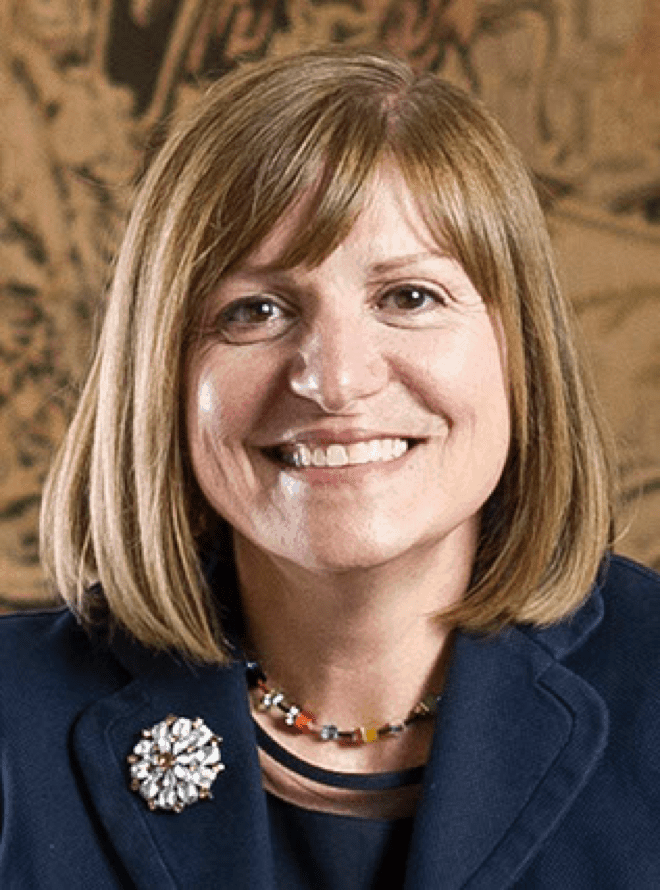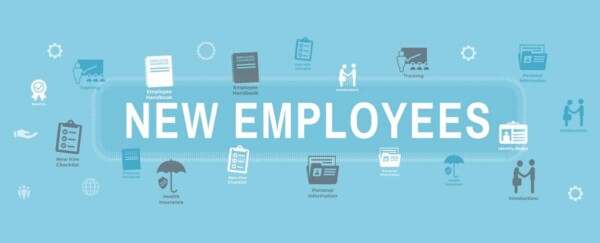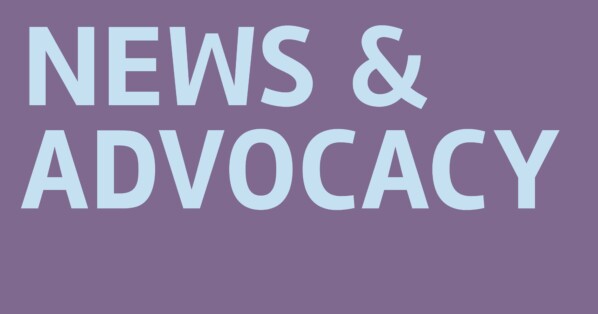SWE Fellow Peggy Layne, Assistant Provost for Faculty Development at Virginia Tech, wrote an article in the Fall 2017 issue of SWE Magazine about Women Engineering Leaders in Academe featuring two deans: Dr. Nada Marie Anid from the New York Institute of Technology and Dr. Elaine Scott from the University of Washington Bothwell. She interviewed them both for SWE’s Diverse podcast.
This article, Women Engineering Deans in Academe, is from the Fall 2017 issue of SWE Magazine .
To view articles on your mobile device, download the SWE Magazine mobile app. Get it today on iTunes or Google Play.
This article is from the Fall issue of SWE Magazine, Women Engineering Deans in Academe 2017.
By Peggy Layne, P.E., F.SWE
According to the American Society for Engineering Education (ASEE), in 2015 women accounted for 21 percent of engineering undergraduates and earned 20 percent of bachelor’s degrees, 25 percent of master’s degrees, and 23 percent of doctoral degrees at the 368 U.S. and nine Canadian engineering colleges tracked by the organization. The number of engineering students, both male and female, has been increasing since 2005, but the proportion of women has remained fairly constant during that time. On the faculty side, women currently make up slightly less than 16 percent of engineering professors, an increase of more than 4 percent since 2006. Of those engineering programs tracked by ASEE, 59 are led by women deans, interim deans, or directors as of early 2017, and more than half of those leaders have been named in the past four years.
While most undergraduate engineering degrees in the U.S. are awarded by large, research-intensive, public, often land grant universities with dedicated colleges of engineering, one of the interesting aspects of engineering education is the variety of programs and institutions where it is offered. Students can earn engineering degrees at large or small institutions, public or private, and choose among schools that offer graduate degrees or those that serve primarily undergraduate students. The two institutions represented in this profile reflect this diversity. One school is a relatively young branch campus of a public research university, while the other is a private research university founded more than 100 years ago as a technical school.


Established as a branch campus of the University of Washington in 1990, UW Bothell is the fastest-growing four-year public university in Washington with more than 5,000 students and 45 degree programs. More than half the students are the first in their families to attend college, and nearly 46 percent are students of color. The School of Science, Technology, Engineering and Mathematics was approved in 2013 with Elaine Scott, Ph.D., as the founding dean, and offers degrees in biology; chemistry; physics; mathematics; computer science; and computer, electrical, and mechanical engineering, with programs in climate science, cybersecurity, and media design.
The New York Institute of Technology was founded in 1910 as the New York Technical Institute, with a mission to provide career-oriented professional education to all qualified students. The school took its current name in 1955 and began offering four-year degrees in 1960. With close to 10,000 students and main campuses in New York City and Long Island, NYIT also has programs in China, the United Arab Emirates, and Canada. The School of Engineering and Computing Sciences is one of seven colleges and schools offering close to 100 degree programs in 50 fields of study. The school’s 3,500 undergraduate and graduate students pursue B.S. and M.S. degrees in mechanical and electrical engineering and computer science. Nada Marie Anid, Ph.D., has been dean of the school since 2009 — the first woman to serve in the role.
Dr. Scott is currently one of the longest-serving women in a dean’s or director’s role for an engineering program in the United States. Prior to her current position at UW Bothell, she served as director of engineering programs at Seattle Pacific University from 2006 to 2012. With degrees in agricultural and mechanical engineering, Dr. Scott served on the faculty at Michigan State, Virginia Tech, and The University of Utah before moving to Seattle. Her commitment to interdisciplinary and collaborative research has produced scholarly publications ranging from applications of heat transfer in food processing, polymer production, power electronics, and tumor detection to factors that influence student success.
Dr. Anid came to NYIT from Manhattan College, where she served on the faculty and as chair of the chemical engineering department after earning degrees in chemical and environmental engineering from the Royal Institute of Technology in Sweden and the University of Michigan. Her research focuses on water quality, sustainability, and engineering education, and she recently co-edited The Internet of Women: Accelerating Culture Change (River Publishers, 2016), a collection of profiles of women scientists and engineers around the world.
Until the formation of the School of Science, Technology, Engineering and Mathematics, UW Bothell was primarily a liberal arts campus. With Dr. Scott’s leadership, STEM now has a much greater presence on the campus: “Since I started in autumn 2012, our school was officially formed; we established our school’s vision, mission, and core values of collaboration, opportunity, rigor, and engagement; and we began a period of rapid growth,” said Dr. Scott. “Since that time, we increased our student FTE [full-time equivalent] from 600 to over 1,400; hired over 50 new faculty; moved into a new building; increased research productivity; and started 11 new degree programs and four new minors. We hope to secure funding for an additional STEM building in the near future to provide further growth. STEM is now a mainstay — not an outlier,” she said.
Dr. Anid is leading change in her school as well, establishing an Entrepreneurship and Technology Innovation Center and working toward a Ph.D. program. “I created an Entrepreneurship and Technology Innovation Center because I felt that it would complement what students do in the classroom, equipping them with business skills, and teaching them to pitch their ideas and how to fund and manage a start-up. This was a particularly important project to instill risk-taking and the acceptance of failure in female students.” Other changes include tripling the number of female faculty members, increasing the research portfolio of the faculty, and working with industry to engage students in more research and design projects.
Facilitators of Success
Dr. Scott describes her role as a facilitator of success as well as administrator of operations: “As a dean, I work with faculty, staff, and students to establish our vision, mission, and core values, and provide a strategic pathway to reach them. The dean oversees the overall operations (personnel, fiscal, facilities, etc.) of the school, including developing the faculty — recruitment, hiring, professional development, research, and promotion and tenure; developing the curriculum — new degree programs, new courses, assessment, accreditation, and continual improvement; developing the staff — recruitment, professional development, organizational structure; developing the infrastructure — equipment, teaching and research laboratories, buildings; developing our community partners — advisory boards, industry partners, external funding; and anything else that affects the school. Most of all, I am a facilitator for our faculty, staff, and students to succeed.”
Dr. Anid also sees the dean’s role as focusing on mission, vision, and relationships: “Academic deans are leaders who inspire and set a vision that grows and advances their unit. Deans set goals and priorities for their schools … and run their schools with an entrepreneurial spirit, always anticipating new trends and pushing research and innovation. They are responsible for all the students, faculty, staff, and academic programs and majors in their school. Aside from academics, deans manage their school’s budgets and finances, as well as renovations and expansions. They also cultivate relationships and forge partnerships that benefit their school and secure external resources to support various initiatives through fundraising and grants.”
Like many engineers, Dr. Scott ended up in engineering because she was good at math and science in high school. Her willingness to try new things opened doors to leadership roles, and her professional society experience helped to develop those skills. As she describes it:
“I always loved math and science. In high school, I didn’t know much about engineering other than it required math and science. That sounded good to me, and I tried it — and I liked it! To be honest, it was not a very well thought out decision, but it worked. … Overall, a willingness to try things outside my comfort zone [led to leadership roles]. I was not on a path for an administrative position, but I took advantage of an opportunity, and then realized that I did enjoy the work. … I was provided an opportunity to be director of a center shortly after I was promoted to full professor at Virginia Tech. That exposed me to more leadership opportunities throughout the university, and provided me with a focus on leadership opportunities when I left VT for family reasons. … Participation in professional societies has been a very important part of my career, especially early on. I was very active in ASME, and that helped form a network of colleagues as well as develop leadership skills through participation in various activities within the organization.”
Dr. Anid, on the other hand, did not originally set out to become an engineer: “As a teenager I wanted to be a writer and I was fascinated by psychology, cognition, and the chemistry of thought. But my family owns a paint manufacturing plant, so I grew up hearing the names of complex chemicals in a business environment. This is mainly why I started my undergraduate studies as a chemistry major and ended up earning a chemical engineering degree.”
Once Dr. Anid became a faculty member, her dean recognized her leadership potential, and professional societies helped her develop those skills. “I was vocal, volunteered on committees, and I was organized, so I was offered the position of department chair. I excelled in that position for eight years and felt that I was ready to accomplish more and make a bigger impact at a higher level. … I owe three professional organizations the skills I have today: AIChE, ASEE, and WELI [Women in Engineering Leadership Institute].”
Recommended Reading and Viewing
Two books Dr. Scott has found helpful are Presumed Incompetent: The Intersections of Race and Class for Women in Academia (Gutiérrez y Muhs, Ph.D., et al., eds., Utah State University Press, 2012) and Whistling Vivaldi: How Stereotypes Affect Us and What We Can Do (Claude Steele, Ph.D., W.W. Norton & Co., 2011). While these books are not about leadership per se, they address issues of difference. “We used both books for schoolwide faculty book readings and workshops. Presumed Incompetent looks at the issues women of color face as faculty in academia — the faculty made changes in how they do things as a result of reading this. Whistling Vivaldi looks at how stereotypes affect us. We looked at how they affect how we teach and what to do about it. Both books generated very interesting discussions.”
Dr. Anid recommends a pair of TEDx talks by Pope Francis (“Why the Only Future Worth Building Includes Everyone”) and Sheryl Sandberg (“Why We Have Too Few Women Leaders”). “Pope Francis because he says, ‘Tenderness is not weakness; it is fortitude. It is the path of humility; the more powerful you are, the more your actions have an impact on people, the more responsible you are to act humbly.’ Sheryl Sandberg because she encourages women to ‘sit at the table,’ persist, and rely on their partner.” Dr. Anid also recommends her own book The Internet of Women and an NYIT TEDx talk on the power of persistence and community.
Leadership Style and Influences
Dr. Anid’s family has always had a big influence on her life. “The people who have influenced me the most are my parents and, later in life, my children: always striving to put their best effort in what they do. What I have accomplished thus far would not have been possible without the support of my husband: always there for me as a true companion and champion.” She believes that as a woman, her leadership style is more collaborative, but not necessarily emotional: “Being a woman is the one reason why my leadership style is collaborative and why I am firm but at the same time gentle and caring. Contrary to typical stereotypes, I don’t show emotions and am calm in crisis situations.”
Dr. Scott’s role as a leader in engineering education has led to an interest in broadening participation in engineering careers and getting more students on the path to studying science and engineering. She notes, “It has made me think about our K-12 education system and how we prepare students to pursue degrees in STEM. In particular, I’m interested in how we can diversify the students who seek STEM degrees.” Asked how being a woman has influenced her leadership style, Dr. Scott replied, “That is difficult to answer, because I only can answer from being a woman. I like to think of myself as being collaborative and open, and willing to listen. I’m not sure how different I would be if I were a man.”
Dr. Scott enjoys seeing her students and faculty succeed. Asked to describe the best and worst aspects of her job, she replied: “The best things about this job are providing access to excellence in education in the STEM fields for our student body, which has a high percentage of first-generation students, and seeing our faculty and staff advance toward their professional goals. The worst thing is not having much control over limiting factors such as space and budget.”
Dr. Anid also values the ability to have a positive impact as a dean: “The best thing about being a dean is the ability to make a difference, the ability to turn ideas into reality, and produce palpable results that affect people directly — students, faculty, alumni, employers, and the wider community. The worst thing about being a dean is the workload, which can become unmanageable while a new dean is assembling her/his team.”
Words of Encouragement
Dr. Scott’s final words for SWE readers: “Don’t be afraid to pursue a leadership role! It can be extremely rewarding!” Dr. Anid advises, “Never give up. Believe in yourselves and always tell yourselves you can do it! You’re going to go through bad days; always find your inner strength, pick yourself up, and keep walking. Make sure you have a support system; build your own network and board of mentors.”
Peggy Layne, P.E., F.SWE, joined Virginia Tech in 2003 as director of the ADVANCEVT program and is currently assistant provost for faculty development in the office of the executive vice president and provost. A former chair of the SWE Magazine editorial board, Layne also is a past president of the Society and was named a SWE Fellow in 2001.
Author
-
![Podcast: Women Engineering Deans [] SWE Blog](https://alltogether.swe.org/wp-content/uploads/2021/10/swe-favicon.png)
SWE Blog provides up-to-date information and news about the Society and how our members are making a difference every day. You’ll find stories about SWE members, engineering, technology, and other STEM-related topics.







